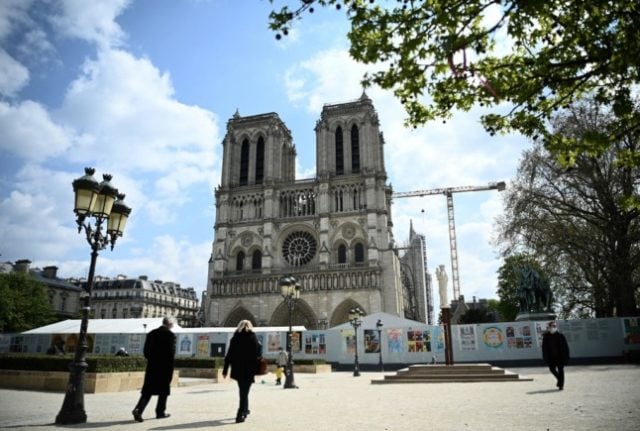Levels of lead in the area have been under observation since the fire that ravaged the cathedral – and melted the lead on its historic roof – in April 2019.
Since then there have been several closures of certain areas, and of schools nearby, when levels of lead have caused concern.
The most recent decision was made “after consulting with the regional health agency of Île-de-France for precaution measures,” the prefecture told Franceinfo.
Pollution au plomb: le parvis de Notre-Dame de Paris est fermé provisoirement, annonce la préfecture de police #AFP pic.twitter.com/jAFyw7vkpV
— Agence France-Presse (@afpfr) May 18, 2021
The square in front of the cathedral reopened on March 31st 2020, but the cathedral itself remains closed while works are ongoing to restore it.
A very small thing, of course, but the parvis of #NotreDame has reopened to the public for the first time since the fire on 15 April 2019. pic.twitter.com/FOx17n5oAY
— Agnes C. Poirier (@AgnesCPoirier) May 31, 2020
Pedestrian and vehicle traffic is now prohibited within the perimeter while its is cleaned.
READ ALSO: French health officials warn of lead pollution risks after Notre-Dame blaze
“When we have cleaned and the numbers have returned to a low enough level, the square will be open to the public again,” the prefecture said.



 Please whitelist us to continue reading.
Please whitelist us to continue reading.
Member comments